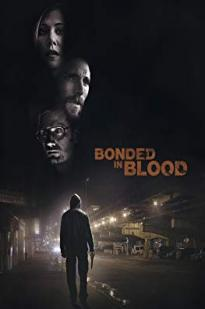What You Should Look for in the Movies
Que viva Mexico! (1931) by Eisenstein, produced in Mexico, left a strong mark on Mexican filmmakers with its graphic and refined description of the Indian landscape and beauty, its development of local folklore and its social and political analysis. We can clearly see his influence in Main dans la main (Mano a mano, 1932), produced by the Russian immigrant Arcady Boytler. In 123movies you can find the best collection of such movies.
The Heroine

The heroine of Ouragan and María Candelaria , Dolores del Rio, already in 1943 had an important Hollywood career behind her, playing Latin, Indian, Polynesian and Brazilian styles. She animates with her sensual and sophisticated silhouette both the Mexican films of Roberto Gavaldón ( Double destin – la Otra, 1946) by Alejandro Galindo ( Doña perfecta , 1950) and Ismael Rodriguez (la Cucaracha, 1956) as well as those of John Ford comme Dieu est mort (1947) and Les Cheyennes (1966).
The Hero
The handsome mustachioed Pedro Armendáriz is the most important Mexican star, frequently working with Fernández and collaborating with John Ford for God is dead (The Fugitive, 1947), the Son of the Desert (Three Godfathers, 1948) and the Massacre of Fort Apache ( Fort Apache, 1947).
Other Mentionable Option
We must also mention Katy Jurado (Nosotros los pobres, 1947, by Ismael Rodriguez) who will then have a career in Hollywood in roles of Mexican or Indian, before returning to Mexico to play in the films of the Chilean Miguel Littin like the Resort of the method (Viva el Presidente, 1978), Pedro Infante, privileged interpreter of Ismael Rodriguez (los Tres García, 1946), Fernando Soler, Silvia Pinal, and Arturo de Córdova.
- Aside from the ranch comedy, musical or not, burlesque comedy is dominated by two figures. The most popular, and internationally known because of a Hollywood career, of Mexican comic actors is Mario Moreno Reyes, known as Cantinflas, who creates an urban and marginal pariah character, the peladito (el Gendarme desconocido, 1941, by Miguel Delgado). Garmán Valdés plays Tin Tan, the Mexican-American pachuco wearing extravagant costumes in Tendres Courges (Calabacitas tiernas, 1948) by Gilberto Martínez Soares.
Among the directors, Roberto Gavaldón was during the fifties the undisputed master of rural melodrama (La Barraca, 1944, and La Escondida, 1955) while Alejandro Gajindo offered a vision of melodrama close to the black films produced by Warner in the years thirty, de Campeón sin corona (1945) à Dos mouillés (Espaldas mojades, 1953), censored for his anti-Americanism. Finally, the baroque and the excess characterize the cinema of Ismael Rodriguez, in the Women of my general (las Mujeres de mi general, 1954).
State cinema
The 1950s kept production at a high quantitative level (around a hundred films a year) but the quality weakened considerably in the face of the domination of the Americans, who controlled 80%. 100 of the rooms. Through the National Cinematographic Bank, created in 1941, the State bought these theaters as well as the majority of the studios and laboratories without however succeeding in improving the content of the films. However, the Spanish Luis Buñuel realizes a series of works as remarkable as sulphurous, diverting the clichés of melodrama, from Gran Casino (1946) to the exterminating Angel (el Ángel exterminador, 1962) while passing by Susana the perverse (Susana , demonio y carne, 1950), Los Olvidados (1950), Torments (El, 1952), Les Hauts de Hurlevent (Abismos de pasión, 1953), La Vie criminelle d’Archibald de la Cruz (Ensayo de un crimen, 1955) and Nazarin (1958).

